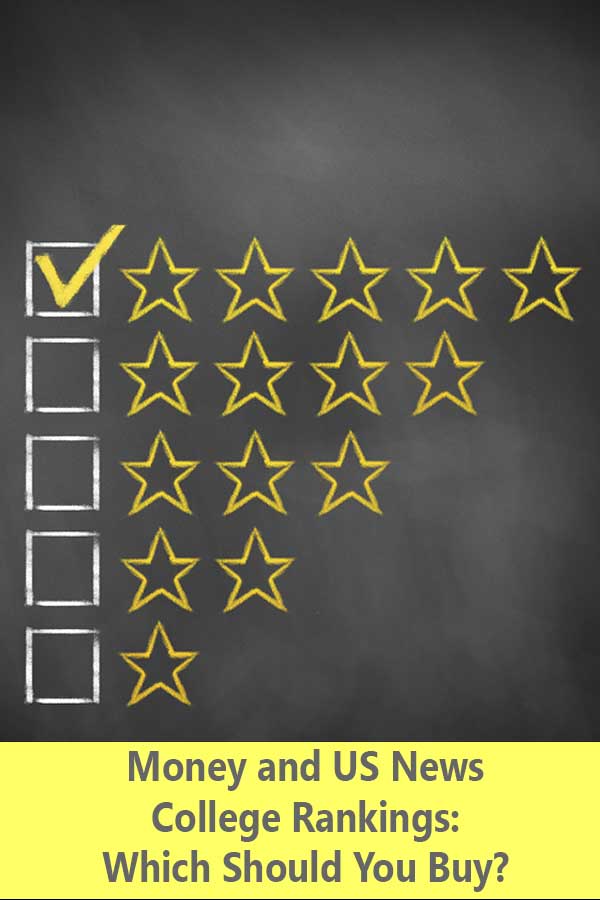 It’s that time of year again. Money Magazine recently released its listing of Best Colleges marking the beginning to fall college ranking season. The difference between the rankings this year is that students and families will have the option to pay for two of the rankings: Money and US News Best Colleges. The question is, should they?
It’s that time of year again. Money Magazine recently released its listing of Best Colleges marking the beginning to fall college ranking season. The difference between the rankings this year is that students and families will have the option to pay for two of the rankings: Money and US News Best Colleges. The question is, should they?
Both Money and US News college rankings have search options that require users to purchase annual subscriptions. There isn’t much difference in the price. US News College Compass is $29.95 and the Money College Planner is $24.95. However, besides the obvious differences in the way they calculate their rankings, users will find the websites also differ in their college search capabilities. The following table reviews and compares some of the features available on the websites.
Money and US News College Rankings Search Comparison
| Category | Money | US News |
| Number of schools | 736, approximately half of all public and private schools. They exclude any schools with graduation rates below the median for its category. Schools that are below the median but perform above expectations given the student composition were included. | Nearly 1,800 schools although not all may show up depending on availability of information. This is more than are actually ranked. |
| Advantage: | Money, they are excluding the “riskiest” schools from consideration. | |
| Search Criteria | Users can actually choose their own ranges for schools size and test scores, although with a slider. And while there are still categories for other factors such as selectivity, the number ranges are included. The most useful feature is the Personalize the MONEY Rankings option. Users can change the weighting of Quality, Affordability, and Post-Grad Earnings. | I like the ability to add preferences to the search such as Greek Life and Undergraduate enrollment. If you don’t care about something, you don’t have to see it. The problem is that the categories aren’t defined. For example, undergraduate enrollment is “Very Small” to “Very Large” without any indication of what that may mean. Also, it’s not clear how rating a preference 2 stars will differ from rating it 4 stars. |
| Advantage: | Money, the ability to change the weight of the rankings makes it far more flexible for families targeting schools. Also allows limited search on Merit and Need-Based aid. | |
|
Search |
The Planner displays the search results in a table as you enter your search criteria. The table only shows 6 categories for comparison, including Net Price of a Degree, Percentage of Students Who Get Merit Aid, and Avg. Student Debt. | As you enter information in the My Fit, you’ll see a list of schools appear on the right with columns for “My Fit”, test scores and average GPA. When you check the schools, you can compare schools by categories under Academics, Cost and Financial Aid, Selectivity, Student Satisfaction, and Student Body. |
| Advantage | Neither. While both websites allow users to click on column headings to sort data, US News provides so many more columns to choose from. However, Money allows users to sort on the Percentage of Students Who Get Merit Aid while US News Does Not. Neither allows users to export or download their searches. | |
The important thing to keep in mind is that there are plenty of other websites that will allow you to search for colleges. In general, the information for the individual colleges doesn’t vary much from website to website. With the exception of the actual rankings, they all come from the same two sources.
What you need to pay attention to is how easy it is for you to search on the criteria that is important to you and your ability to use the data you find. Therefore, you should probably try some of the free options before you actually pay to use the search abilities included with the rankings.



2 thoughts on “Money or US News College Rankings: Which Should You Buy?”